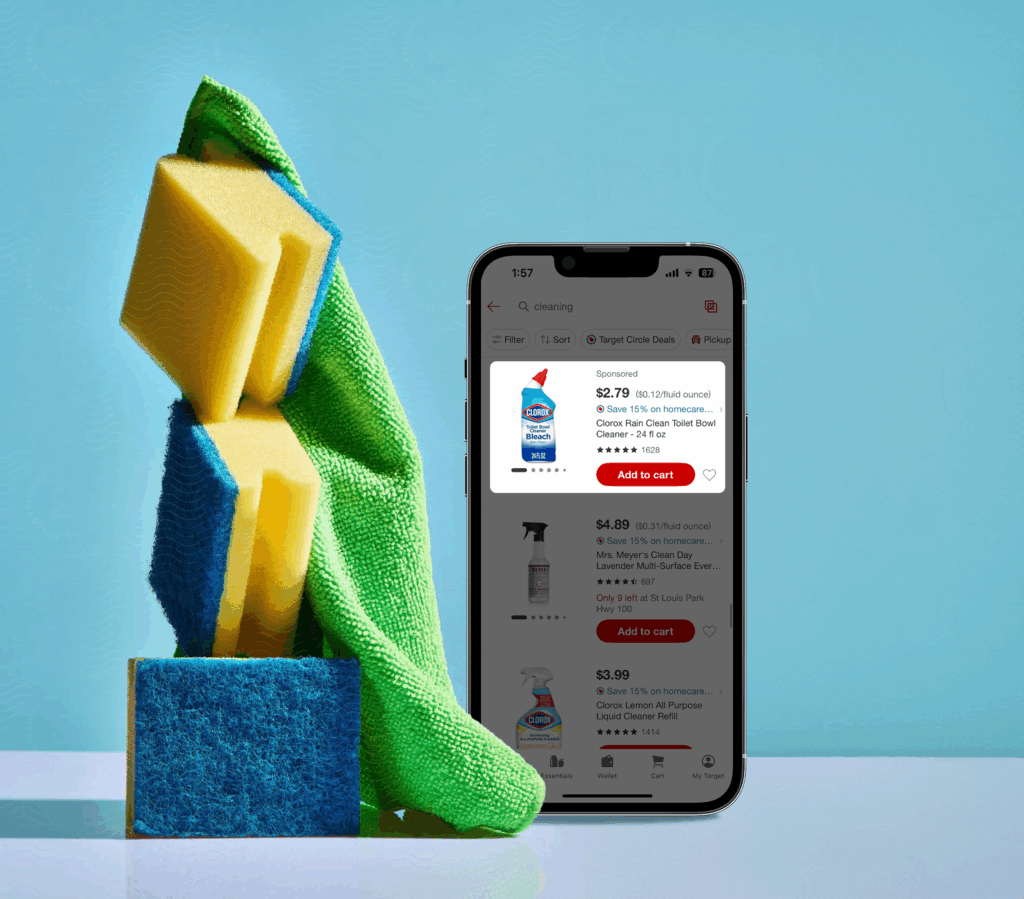
Display by Roundel™ | Food and Beverage | Social by Roundel™

The commerce media landscape is dynamic and constantly changing, making the success of a campaign hinge on maximizing return on ad spend (ROAS). A campaign media plan can be built in the most effective way possible; however, external factors like seasonality, competing campaign line items, active number of audiences during the campaign duration, fluctuating demand for product search etc., can make any well-configured campaign underperform. So, constantly monitoring your ad campaigns and optimizing them to improve your ROAS becomes crucial.
In the following sections, you will learn key considerations for optimizing budgets and discuss how Roundel efficiently addresses these considerations through AI-driven capabilities to maximize performance.
Budget optimization is a key strategy that focuses on effectively allocating budgets towards the highest performing ads to boost your ROAS. An ad campaign is typically made up of multiple “ad groups,” which are a collection of ads that share parameters defining how the ads within those groups get served. Parameters can include bid costs, targeting, and placements. The strategic challenge in managing a campaign with multiple ad groups lies in how to distribute your budget to ensure each ad group contributes efficiently to your overall goals. Through addressing this challenge, advertisers can maximize the impact of campaigns by directing resources toward the ad groups generating the best results to amplify key metrics, whether it’s awareness, consideration, or conversion.
Using ROAS as an example, budget allocation should be adjusted on line items with higher ROAS to maximize the campaign’s total sales. As easy as that sounds, the returns of a line item constantly change and can be higher or lower with respect to other line items in the campaign. The delivery capacity of the line also varies based on a variety of external factors. The ideal solution must be able to consider recent changes to line items, inventory forecast, delivery capacity, and other essential factors to estimate and optimize ROAS. The solution should also be fast and effective in processing many line items at one time.
Maximize the impact of campaigns by directing resources toward the ad groups generating the best results to amplify key metrics.
When to intervene with optimizations?
Optimize by Roundel™ ensures optimizations are backed by sufficient data, which usually requires a certain amount of time for a campaign to collect enough performance data to make an informed decision. Roundel’s tool incorporates a “supervised ranking model” which leverages machine learning to sort through data to predict future outcomes. The tool uses historical performance and real-time in-flight data such as sales, clicks, add-to-carts, and all other campaign metadata information to estimate the dates on when optimization is needed. Based on the right inputs, Optimize by Roundel™ helps determine when to intervene with optimizations towards campaigns that are underdelivering.
How much budget to move?
The second key decision is to decide how much of the budget should be moved, and this requires the Roundel team to measure and estimate what to deliver in terms of performance metrics. Performance for a campaign can be measured in different ways, which includes cumulative sale conversions, conversions over weekends, click-based conversions from the last seven days, and so on. Optimize by Roundel™ uses the past performance of campaigns to generate data for different scenarios and to estimate performance metrics based on where and how much the budget moves across line items.
Optimize by Roundel™ then determines new impression goals based on the latest campaign data. This includes impression goals, impression delivery, inventory forecasts, and estimated performance metrics – all to ensure that the overall performance of the campaign is maximized as desired.
At Roundel, we combine human ingenuity with AI-driven recommendations to design and deliver personalized, engaging shopping experiences. Optimize by Roundel™ further complements our human understanding of what resonates most with audiences, allowing us to make optimizations that help consumers discover the most relevant products they want and need. To evaluate Optimize by Roundel’s potential in helping to drive increased results, Roundel evaluated the ROAS lift across top performing campaigns where optimizations were made with the tool over a six-month period. The ROAS lift was a result of comparing spend and sales driven from optimized campaigns versus the theoretical sales expected without optimizations, the latter of which was calculated by taking the average ROAS multiplied by spend.
When looking at campaign optimizations that include the use of Optimize by Roundel™, there is a strong ROAS lift, such as Clorox with an overall ROAS lift of 54%. These numbers show how advertisers benefit from AI-driven recommendations paired with manual monitoring from media traders.

overall ROAS lift for Clorox with AI-driven media recommendations
Roundel continues to focus on enhancing media campaigns that drive greater relevancy for consumers. In the year ahead, Optimize by Roundel™ will expand to support more channels. Beyond making optimizations during a campaign flight, Roundel is exploring audience creation enhancement, which enables brands to connect with relevant Target guests as soon as media campaigns begin running.
Additional exploration is underway with proprietary machine learning models to securely and ethically leverage behavioral and interest signals from Target guest data platforms for audience creation. This includes using historical purchases and browsing behaviors to create audience segments with a high likelihood of making their first purchase within specific categories. These audience segments help brands acquire new customers and drive ROAS. This initiative is the first of many upcoming Roundel enhancements, backed by data science, to make an end-to-end impact on media campaigns across the consumer journey. Roundel will continue to explore innovative ways to connect consumers to relevant products and improve media performance.
For more articles like this, subscribe to the latest news.

E-commerce Product Leader with 14+ years of experience across product management, product analytics, and product development. Experienced in conceptualizing, strategizing, and building products from ground up by collaborating with multiple partner teams and executing to timelines.